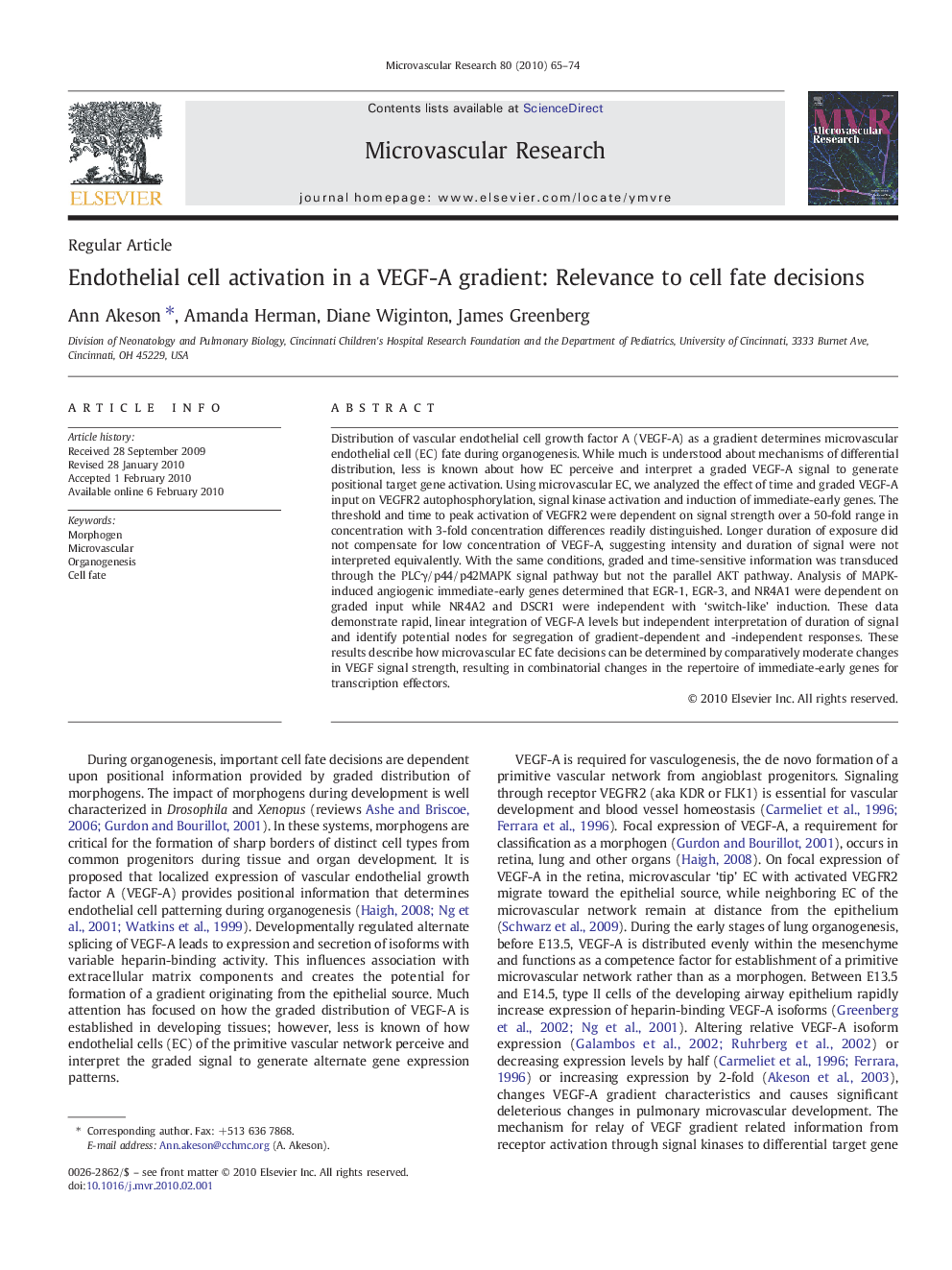| Article ID | Journal | Published Year | Pages | File Type |
|---|---|---|---|---|
| 1995093 | Microvascular Research | 2010 | 10 Pages |
Distribution of vascular endothelial cell growth factor A (VEGF-A) as a gradient determines microvascular endothelial cell (EC) fate during organogenesis. While much is understood about mechanisms of differential distribution, less is known about how EC perceive and interpret a graded VEGF-A signal to generate positional target gene activation. Using microvascular EC, we analyzed the effect of time and graded VEGF-A input on VEGFR2 autophosphorylation, signal kinase activation and induction of immediate-early genes. The threshold and time to peak activation of VEGFR2 were dependent on signal strength over a 50-fold range in concentration with 3-fold concentration differences readily distinguished. Longer duration of exposure did not compensate for low concentration of VEGF-A, suggesting intensity and duration of signal were not interpreted equivalently. With the same conditions, graded and time-sensitive information was transduced through the PLCγ/p44/p42MAPK signal pathway but not the parallel AKT pathway. Analysis of MAPK-induced angiogenic immediate-early genes determined that EGR-1, EGR-3, and NR4A1 were dependent on graded input while NR4A2 and DSCR1 were independent with ‘switch-like’ induction. These data demonstrate rapid, linear integration of VEGF-A levels but independent interpretation of duration of signal and identify potential nodes for segregation of gradient-dependent and -independent responses. These results describe how microvascular EC fate decisions can be determined by comparatively moderate changes in VEGF signal strength, resulting in combinatorial changes in the repertoire of immediate-early genes for transcription effectors.
